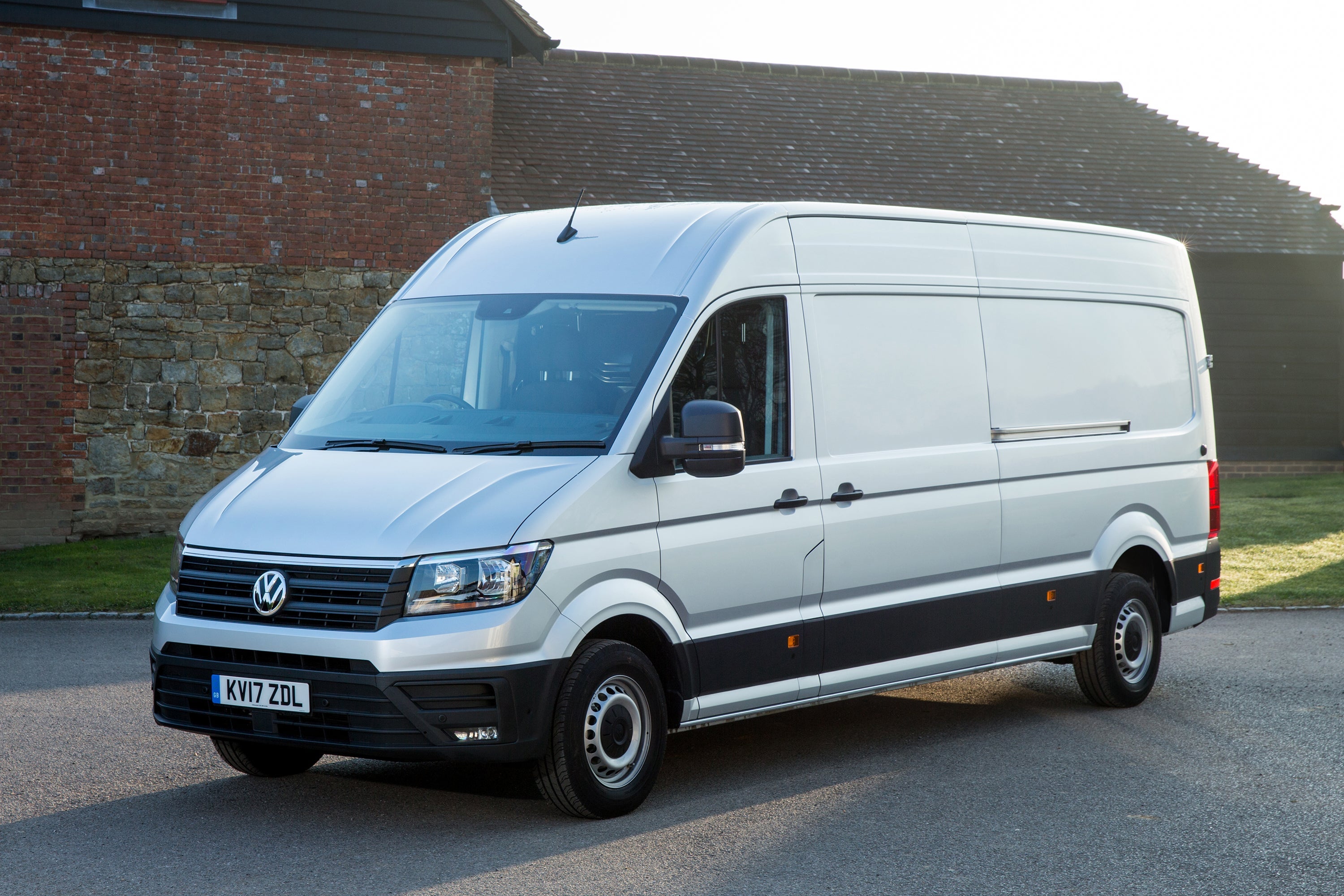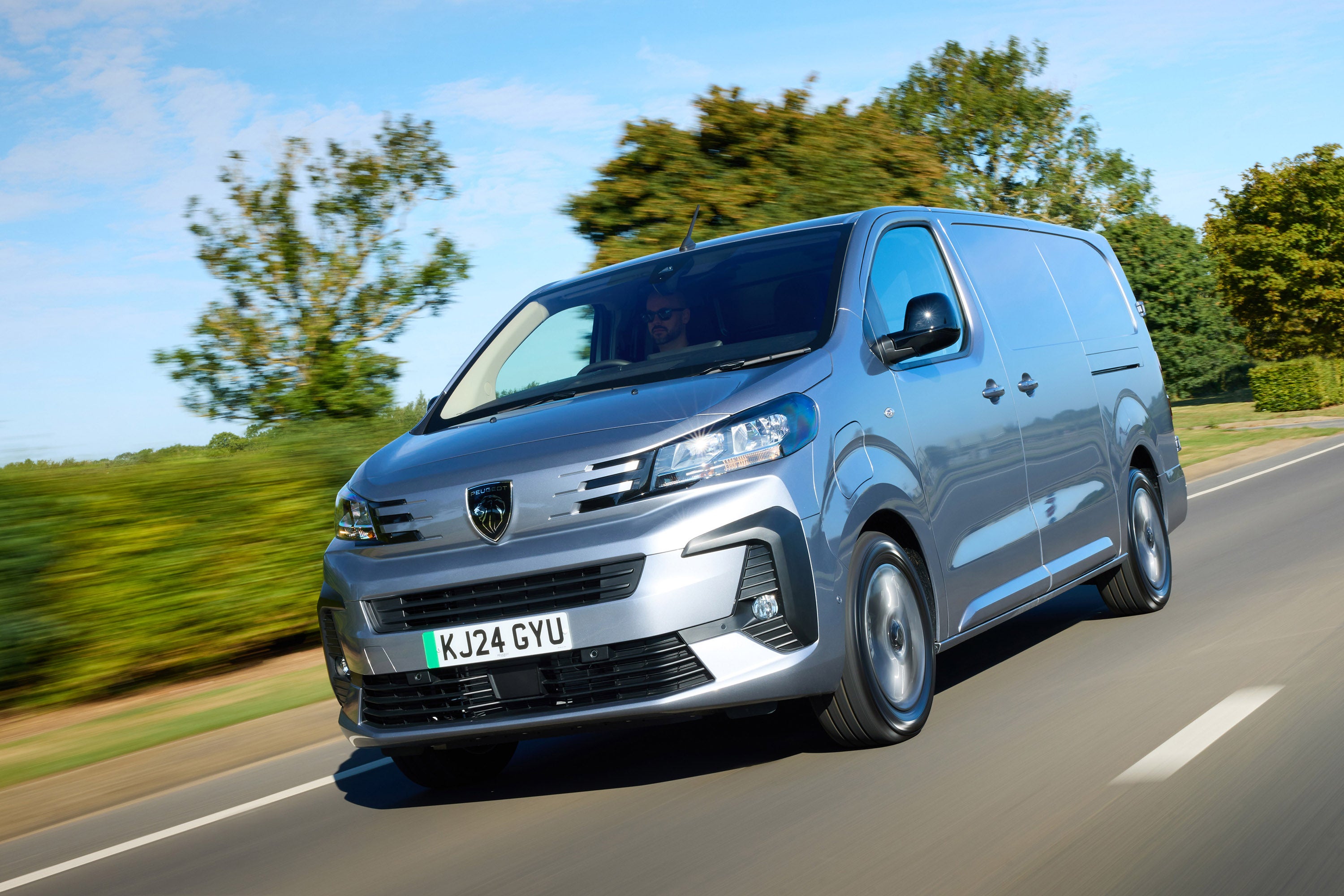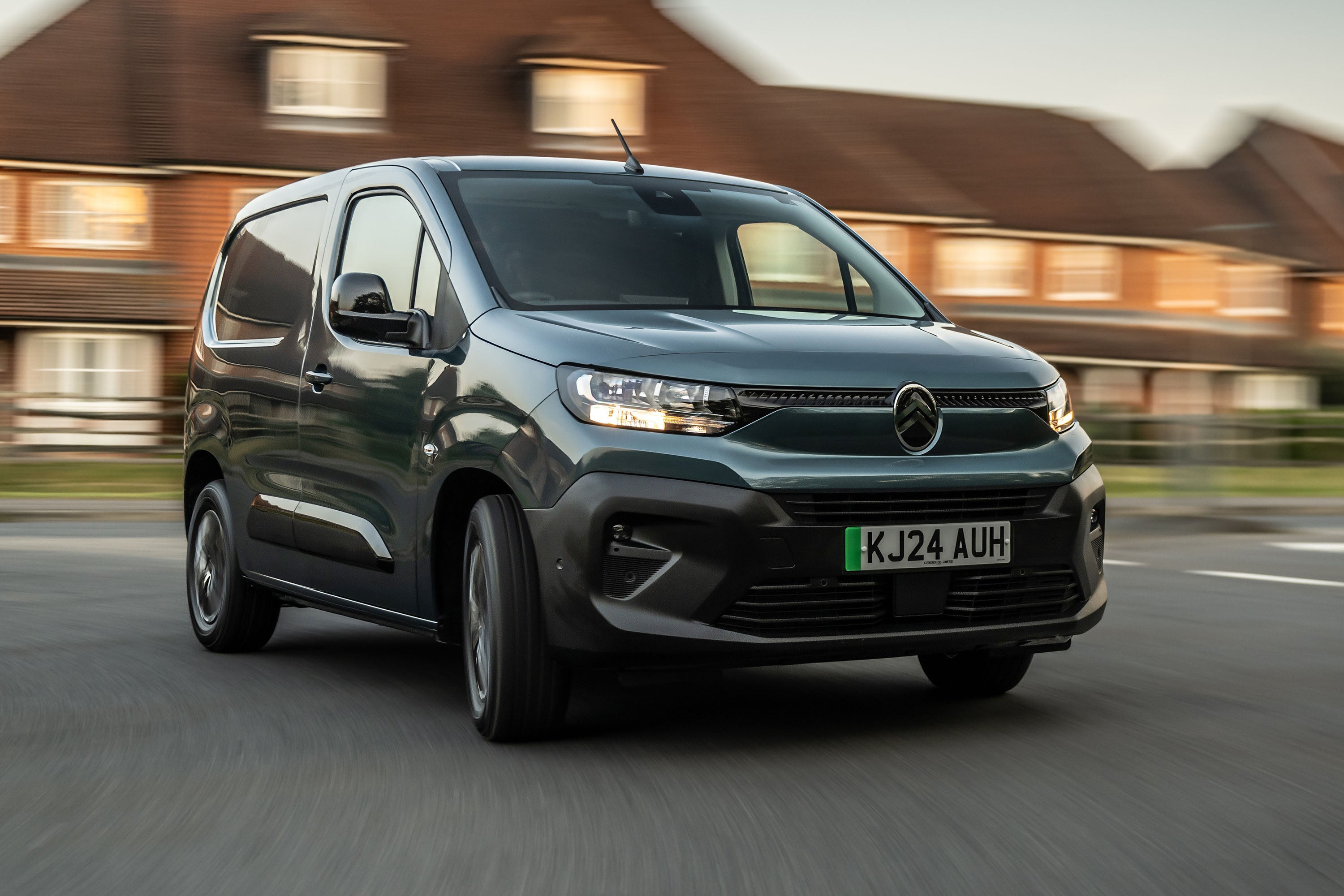
Looking to find the best electric van? You've come to the right place. We've tested most of the commercial EVs on sale, so we're well placed to let you know which is the best electric van you can buy.
In the not-too-distant future, electric vans could well be the only way to transport goods in cities like London, Birmingham and Manchester. Think of the driver dropping off all those Amazon deliveries. They don’t need to cover hundreds of miles: they just need to take the parcel the last few miles from distribution hub to doorstep.
Of course, a van needs plenty of torque to move its goods, something that electric motors provide in abundance, and all of that torque is on hand the nanosecond you start rolling.
Despite a high initial price, an electric van can save you a lot of money on running costs, as well as in clean air zone fees, like the ULEZ in London. Here, we've ranked the best electric vans you can buy today, on both the new and used markets.
If you're ready to buy we've got over 2,000 used vans for sale, including an wide range of used electric van for sale.
Best electric vans in 2025
1. Ford Transit Electric
Year launched: 2023

The Ford Transit has often been described as the 'backbone of Britain', the vehicle that's kept this country moving for decade after decade. It's such a common sight on British roads, and such a pivotal part of the fabric of British society, that it's name has become common parlance to describe large vans of all types.
The latest version, originally introduced in 2014, is the best yet, and if anything, the electric version, which followed in 2023, is the best of the bunch. It the most civilised vehicle of its type to drive, and that's only enhanced by the all-electric powertrain. There's a standard range battery that delivers up to 196 miles of driving on a full charge, or an extended range battery that gives you up to 249 miles.
Like Transits that have gone before, you have seemingly infinite choices when it comes to your combination of wheelbase, length, roof height, payload, and GVW, so there really is a Transit to suit all needs.
2. Ford Transit Custom
Year launched: 2023

The Ford Transit Custom is slightly smaller than the full-size Transit we've just been talking about, but in the current market, it's an even bigger success. The Transit Custom is the UK's biggest-selling van, and Ford usually sells more of them in a year than its biggest-selling car (the Puma SUV, if you were wondering).
Why so successful? Well, primarily because it's the best van of its type. Like its bigger brother, it offers you stacks of choice over length, height, payload and all the rest of it, and there are some genuinely ingenious touches - like a steering wheel that tilts to become a table for either your lunch or your laptop, depending on what time of the day it is - to make your working day that little bit easier.
On the road, the Custom delivers a mix of comfort and agility that no other van can match, and depending on the spec of your van, it can take you up to 209 miles on a single charge. Alternatively, if you'd still like an element of city-friendliness, but you occasionally need to do the odd longer schlep, then the Custom is also available as a plug-in hybrid, with an all-electric range of up to 35 miles, and a 2.5-litre petrol engine to keep you going once your battery is depleted.
3. Mercedes-Benz eVito
Year launched: 2020

Designed for delivery drivers and city-based van operators, the Mercedes eVito used to cover 93 miles on a single charge, but following changes made in 2022, that was extended to a much more useful 162 miles. The medium-size e-van is ideal for city-based couriers who do short distances, especially when you consider the expensive DPF problems that cause headaches for diesel drivers.
The all-electric van takes six hours to fully charge and the electric battery pack is stored under the loadspace floor, so it doesn't impact load capacity. With 300Nm of torque available, the eVito easily whistles its way onto fast moving roads, however, the van struggles for performance once you pass 50mph.
The Mercedes eVito is available in two load lengths - long and extra long - and cargo volumes range from 6.0- to 6.6 cubic metres. Payloads are similar for both versions. All get twin side sliding doors as standard and gross vehicle weights (GVW) peak at 3.2 tonnes.
4. Nissan e-NV200
Year launched: 2014

The e-NV200 has been around for donkey's years now, and has been replaced by the excellent Townstar, of which there is an all-electric variant. However, as a super-cheap used buy, we reckon there's still plenty to recommend the NV.
Nissan gave use the first mass-market EV with the Leaf, so the e-NV200 is not the firm's first rodeo when it comes to electric vehicles. In fact, the e-NV200 is based on the Leaf, so you know the technology is tried, tested and reliable – critical for a working vehicle.
A compact van, the e-NV200 has a 40kWh battery with an official range of 124 miles. Of course, that’s subject to change if it’s fully loaded with 770kg (there’s a 4.2-cubic-metre load volume and a 2.4-metre long load bay).
Charging times are similar to the Leaf with the van capable of being fully charged from a standard socket overnight, or topped up to 80% from a rapid charger in 30 minutes.
5. Citroen e-Dispatch
Year launched: 2020

Citroen, Peugeot and Vauxhall have been sharing a van platform for quite a while, so it makes sense that they’ll all have an electric version with just a few subtle tweaks between each model. So alongside the Citroen e-Dispatch, there's also the Peugeot e-Expert and Vauxhall Vivaro Electric (see further down).
Drivers could originally choose between a 50kWh battery for a 143-mile range, or a 75kWh battery for a 205-mile range, but later on, the smaller option was discontinued, and the range of the larger option was extended to 219 miles. The e-Dispatch comes comes in three different body lengths, depending on the age of the example you're considering.
The e-Dispatch offers up to 6.6m3 of load capacity, plus there's a useable load length of up to 4 metres when fitted with the optional moduwork system.
6. Peugeot Partner Electric
Year launched: 2018

The Partner is the smallest of Peugeot's various van offerings, but for those who don't need ultimate cargo-carrying space, it still provides enough practicality and versatility to effectively facilitate your business.
As part of the Stellantis stable, it's essentially the same underneath as the electric versions of the Citroen Berlingo, Fiat Doblo and Vauxhall Combo, but to our eye, it might just be the most stylish of the bunch. Like its combustion-free cousins, it provides a decent balance of ride comfort and handling precision, while the 50kWh battery pack makes it good for a range of 175 miles in pre-facelift form, or 213 miles if you buy one built after the 2024 facelift.
7. Vauxhall Vivaro Electric
Year launched: 2020

The Vauxhall Vivaro Electric (previously called the Vivaro-e before a rebrand) is one of a trio: its equivalents are the Citroen e-Dispatch and Peugeot e-Expert, with Vauxhall part of the same Stellantis Group.
Vauxhall Vivaro Electric buyers can choose the full-length panel van or a double-cab version with two rows of seats, with owners also able to specify a short- or long wheelbase model. Vauxhall also says the Vivaro Electric has a maximum towing capacity of 1000kg.
The 50kWh battery in early examples has a range of up to 143 miles, while the larger 75kWh battery claims a range of up to 205 miles. As of a 2024 facelift, the smaller battery was discontinued and a larger one's range was improved to 219 miles.
The Vivaro Electric is equipped as standard with the same array of driver aids and interior kit as the regular Vivaro, so all versions get lane-keeping assistance, traffic sign recognition, automatic emergency braking and a 7.0-inch infotainment touchscreen.
8. LEVC VN5
Year launched: 2020

Here’s a slightly different take on the electric van. It’s made by LEVC and is based on their taxi. Unlike a hybrid van, this is a range extender. That means there’s no connection between the wheels and the 1.5-litre three-cylinder petrol engine – the engine simply acts as a generator to keep the battery topped up.
And the 31kWh battery in the VN5 has an all-electric range of 58 miles. Or 300 if you need to use the range extender. It won’t suit everyone, but it’s handy if you can do a lot of stop-start low-mileage wor, but need to throw in the occasional long run.
It’s not a bad little worker, either, with a payload of 830kg and a cargo volume of 5 cubic metres making it ideal for city life.
9. Fiat E-Ducato
Year launched: 2020

The Fiat Ducato is an Italian institution. It has been keeping Italy moving for the best part of 35 years.
Available from 2021, the E-Ducato offers all the same sizes as the regular Ducato. That means there’s plenty of choice when it comes to payloads, with the biggest being 1.9 tonnes.
Would-be buyers can choose from two batteries variants in early examples. There’s a 47kWh that offers a range of 137 miles, or a 79kWh that can go as far as 224 miles on a charge. During a 2024 facelift, however, the electric powertrain was completely overhauled with a much larger 110kWh battery that extended the range to 262 miles. That's makes it a more realistic proposition for more users.
10. Volkswagen ID.Buzz Cargo
Year launched: 2022

Before we get into all the spoddy van stuff, let's take a moment to appreciate what the Volkswagen ID.Buzz Cargo can do for your business from a PR perspective. After all, it has a level of coolness and style that no other van can even come close to, with all those styling cues that pay homage to the iconic Type 2 Bus of the 1950s and 60s. As such, if yours is a business that would benefit from a funky, slightly bohemian image, then you could do a lot worse than slap your logo on the side on one of these bad boys, and rock up to jobs to a chorus of oohs and ahhs.
There's a lot more to the ID.Buzz than just it's looks, though. It's based on the same electric platform as all of the company's other ID cars, so it's a comfortable and civilised thing to drive, and it has an interior that's high in quality and smartly styled. All versions have a 77kWh battery for a range of up to 254 miles, and it'll rapid charge at a rate of up to 170 kW. The load compartment volume goes up to 3.9 cubic metres, and you get sliding doors on either side, plus a liftgate opening at the very back.
You can now buy a wide range of electric and hybrid vans in the UK. The Mercedes eVito and eSprinter are two of the most popular, along with the new Ford E-Transit. If you're looking for a smaller electric van, we'd recommend the Peugeot e-Partner or Citroen e-Berlingo.
Electric vans make a lot of sense for those who cover a lot of miles around town, particularly delivery drivers with regular stops. Not only are electric vans better for the local environment than a diesel van, they're better suited to these kinds of journeys and will save you money in both fuel and maintenance costs.
The Ford Transit Custom is the UK's best-selling van. Indeed, the company sells more of them in a year than it does its biggest-selling passenger car, the Puma SUV. The latest Transit Custom is available as an all-electric van, or as a plug-in hybrid if you need more flexibility.
Generally, electric vans are very good to drive. Not only are they extremely refined (there's no engine noise, obviously), but you also get instant acceleration. That means they feel eager off the line and are particularly well suited to town driving.
They're easy to drive, too. You don't have any gears to change, but otherwise the controls are the same as you'd get in a traditional petrol or diesel van. If you've never driven an electric vehicle before, an electric van needn't be overwhelming.
Find a Ford Transit Custom for sale
Ford Transit Custom2.0 TDCi 170ps Low Roof Sport Van
201957,888 milesDiesel£471 mo£21,300
inc. VATPE217QSFord Transit Custom2.0 EcoBlue 185ps Low Roof D/Cab Sport Van
202220,315 milesDiesel£709 mo£33,180
inc. VATEX28FNFord Transit Custom2.0 EcoBlue 136ps H1 Double Cab Van Trend
20249,483 milesDiesel£752 mo£35,220
inc. VATTR13LNFord Transit Custom2.0 EcoBlue 105ps Low Roof Leader Van
202151,933 milesDiesel£14,148
inc. VATPR22YQFord Transit Custom2.0 EcoBlue 136ps H1 Van Trend Auto
202411,247 milesDiesel£29,868
inc. VATPR22YQFord Transit Custom2.0 EcoBlue 130ps Low Roof Limited Van
202084,604 milesDiesel£15,348
inc. VATHU47DYFord Transit Custom2.0 EcoBlue 130ps Low Roof Limited Van
202266,838 milesDiesel£16,788
inc. VATHU47DYFord Transit Custom2.0 EcoBlue 170ps Low Roof D/Cab Limited Van
202147,000 milesDiesel£499 mo£23,340
inc. VATEX28FN
More van guides
Whether you're looking for advice on what van to buy or looking to find your next pickup truck, we've got the answer


